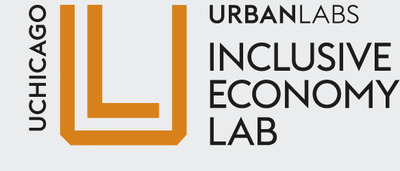Introduction
Some 1.1 million K-12 students in the United States, a population roughly the size of San Diego, California, experienced homelessness in the 2020–21 school year (NCHE, 2021). Before the onset of the COVID-19 pandemic, nearly 18,000 students in Chicago Public Schools (CPS) lacked a stable place to call home. Although housing instability is a challenge faced by many in Chicago with school-aged children, this burden falls disproportionately on Black families. Eighty-five percent of CPS students experiencing homelessness identify as Black (Hallberg et al., 2021), but only 35.8 percent of CPS students identify as Black (CPS, 2022).
Students experiencing homelessness overwhelmingly value education and the experience of being in school (Hallberg et al., 2021). However, housing instability can negatively affect students’ engagement with school. Children experiencing housing instability encounter myriad depressed academic and social engagement outcomes as compared to similar stably housed peers, such as lower attendance rates, high school mobility (Brumley et al., 2015; Fantuzzo and Perlman, 2007; Fantuzzo et al., 2012, 2013; Herbers et al., 2012), lower grade point averages (GPAs), and other academic markers (Brumley et al., 2015; Cutuli et al., 2013; Fantuzzo et al., 2013; Hallberg et al., 2021; Obradovic et al., 2009).
It is imperative for school districts to explore how new policies and programs can help stabilize families’ housing and re-engage young people in school. Yet, to date, there is limited existing rigorous research on how school districts, social service providers, housing authorities, and human services public agencies can successfully partner to support families experiencing housing instability, particularly in the case of families who are living doubled-up.
This report addresses this knowledge gap by providing evidence from a small pilot project that offered permanent supportive housing to 100 CPS families experiencing housing instability in Chicago. Known as the Families in Transition (FIT) program, the project combined permanent housing subsidies with supportive case management services (a model known as permanent supportive housing) that, in this case, employed trauma-informed, strength-based approaches. To understand the impact of offering permanent supportive housing to families experiencing housing instability on housing and educational outcomes, the research team employs a difference-in-differences design that takes advantage of the fact that the program was offered to some families in some CPS schools and not others to estimate the causal effect of the program. The team supplements this quantitative analysis with data from focus group sessions conducted with families participating in the program to illuminate their experiences.
The program was successful in identifying and housing families. Eighty-nine percent of the families offered a spot in the program were successfully housed, and 87 percent of families remained housed 3 years after the program started. This result translated into real increases in families’ housing stability. FIT-eligible children were less likely to be enrolled in CPS’ Students in Temporary Living Situations (STLS) program (the district’s McKinney-Vento program) and less likely to access homelessness services 1 year after the program started.3 Furthermore, the research team found suggestive evidence that the program increased students’ connection to school. Students from families who received an offer of the program attended fewer schools and were more likely to be enrolled in the school district during the study period than students in the comparison group. However, the team finds no evidence that the program increased student attendance or GPAs. Data from the focus groups revealed both the perceived value of the program to participating families and some unanticipated consequences of the program’s structure, including intrusive monitoring of the lives of some of the participating families by their landlords.
This report first describes the FIT program model, then situates the study in the broader literature on supporting families and students experiencing housing instability. Methodology, data, and analytic approach are outlined next, followed by study findings and takeaways.
Description of the FIT Program
The FIT program started in 2017 and was funded by a combination of revenue from a local Shared Housing Ordinance (commonly referred to as the “Airbnb” tax) and dedicated housing subsidies from Chicago’s Low Income Housing Trust Fund (LIHTF). A collaborative effort between the City of Chicago’s Office of the Mayor, the Chicago Coalition for the Homeless, the Department of Family and Support Services, and the Corporation for Supportive Housing, FIT was designed to serve families with children enrolled in CPS’ Students in Temporary Living Situations (STLS) program who were either experiencing literal homelessness or living doubled up under the McKinney-Vento Department of Education definition of homelessness.4 Notably, families living doubled-up rarely qualify for Department of Housing and Urban Development (HUD)-funded permanent housing programs overseen by the local Continuum of Care (CoC).
The FIT program is designed to promote long-term residential stability by coupling permanent housing with ongoing case management services, known as a Permanent Supportive Housing (PSH) model. Families selected for the FIT program received a permanent housing subsidy6 and support in finding a private-market apartment that would accept the subsidy. Each family was also assigned a caseworker charged with using a trauma-informed and strength-based approach to promote residential stability, increase household skill levels and/or income, and encourage greater self-determination.7 FIT caseworkers sought to connect families with benefits for which they qualify (e.g., food stamps, Social Security, Medicaid) and services focused on well-being that help address families’ individual housing barriers, including substance use disorders and/or mental health issues. The caseworkers also ensured that children were connected to schools and/or quality early childcare settings and coordinated with CPS STLS Liaisons and local Head Start agencies as necessary. Each case manager served a maximum of 15 families to ensure that they were able to provide targeted and personalized supports.

